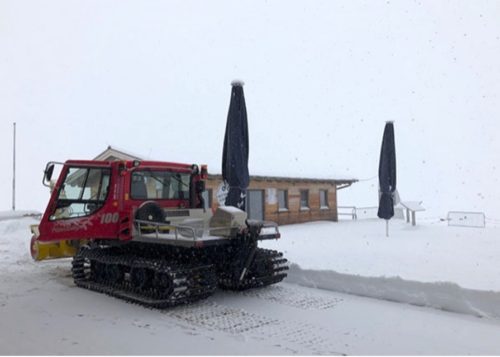
And just before some hot weather is about to sweep across Central Europe starting tomorrow, winter made a brief comeback – at the peak of summer – in the Alps!
Snow down to 2300 meters
“At high altitudes of the Alps, the precipitation turned into snow overnight,” reported Wetteronline.de here. “In some areas, the snowfall line dropped to an altitude of around 2,300 meters.”
A foot of snow
Wetteronline.de also noted that on Germany’s highest mountain, Zugspitze, “about 30 centimeters of fresh snow fell in the morning at minus 2 degrees.”
“Employees of the Zugspitzbahn were in continuous operation to clear paths and the visitor platforms from the summer snow masses.”
DWD national weather service labels a cooler than normal July “quite warm”
Meanwhile, Germany’s DWD national weather service recently issued what I’d call a press release that is designed especially for stupid and lazy journalists who won’t bother fact-checking.
In its preliminary report on July weather in Germany, the DWD announced that the mid-summer month this year was “rather warm.”
According to the DWD, the average temperature in July for Germany was 17.7°C (64°F), which was “0.8°C (1.44°F) above the value for the internationally valid reference period 1961 to 1990.”
But what the DWD fails to tell us is that the 1961-1990 period was a cold one. And not only that, the World Meteorological Organization (WMO) no longer uses the 1961-1990 reference period. Instead, it uses the 1981-2010 period to calculate the means.
The DWD does mention that July 2020 was 0.3°C (0.54°F) too cold compared with the valid reference period 1981 to 2010. So at the DWD, 0.3°C below the valid mean is in their eyes “rather warm.”
Read more at No Tricks Zone
















